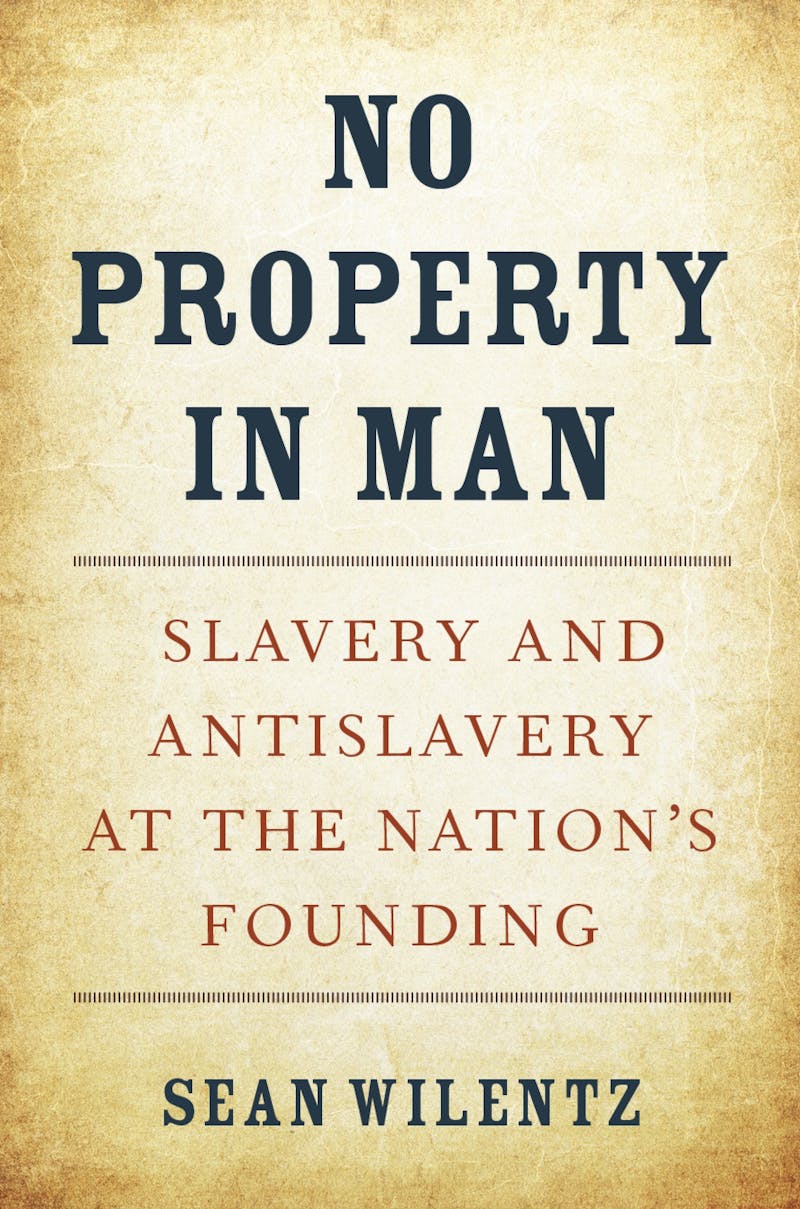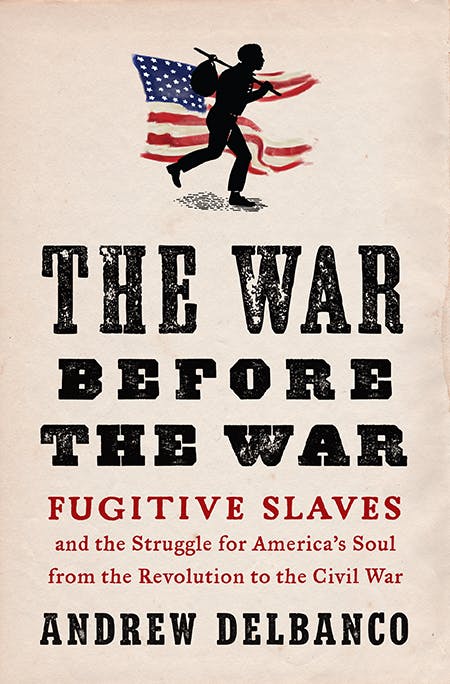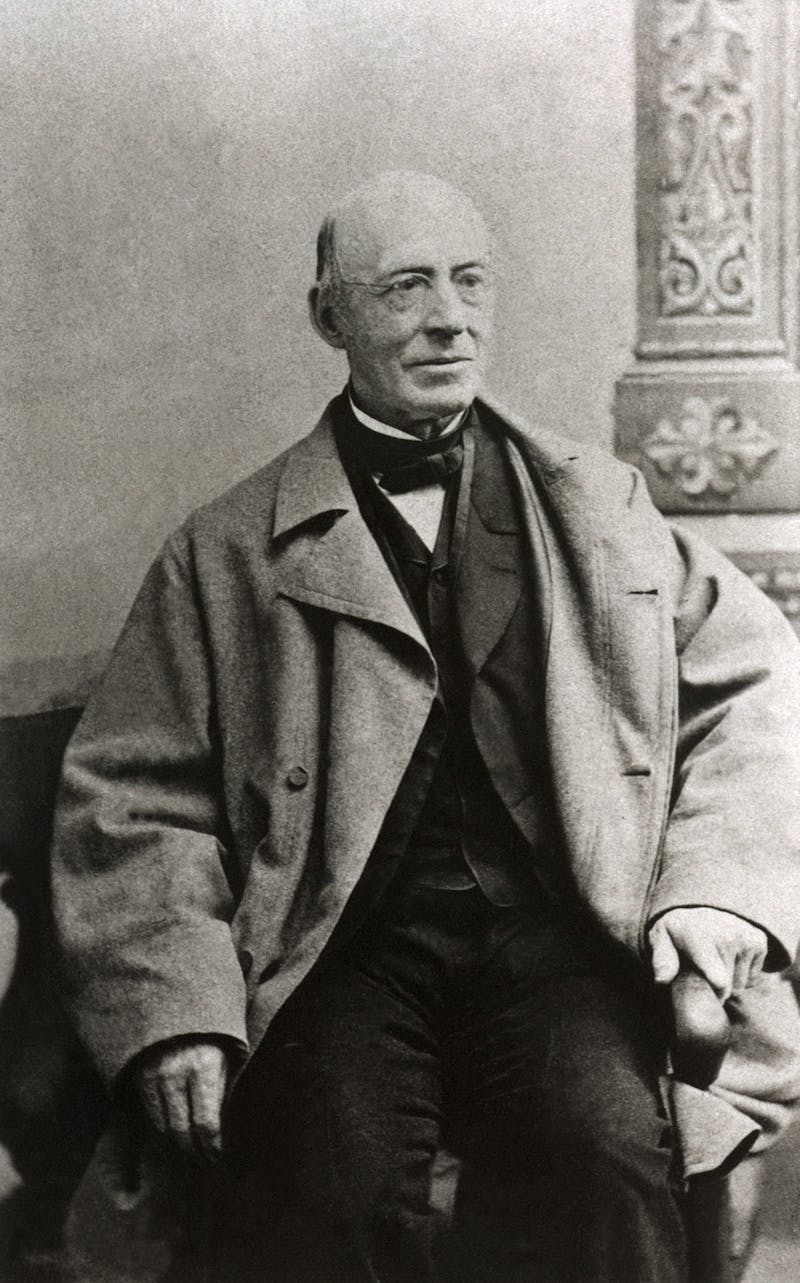In October 2017, President Trump’s chief of staff, John Kelly, declared that “a lack of an ability to compromise” brought on the Civil War. This remark outraged a number of historians, who told The Washington Post they thought it “strange,” “highly provocative,” and “kind of depressing,” something that was out of touch with current historical research. Kelly’s interpretation carried echoes of a revisionist explanation of the causes of the Civil War that was popular in the middle decades of the twentieth century. Commonly known as the “blundering generation” interpretation, it held that the sectional conflict arose not from a fundamental disagreement over slavery but from the squabbling of politicians whose demagoguery and fanaticism eventually undermined the political system.


Few historians pay attention any more to the blundering generation interpretation. Not only did it play into the hands of Southern apologists, by implying that slavery was not the fundamental source of the conflict, but it also played down the substantial differences between the societies of the North and South that slavery had created. Most academic historians today no longer think of the abolitionists as fanatical agitators, stirring up hostility between the sections. Instead, they have become the heroes of their narratives. Indeed, many have come to accept the view of the abolitionist William Lloyd Garrison that America’s entire political system was riddled with the evils of slavery, beginning with its founding document. The Constitution, Garrison declared, was “a covenant with death” and “an agreement with hell.”
In a like manner, many present-day historians have contended that the border between the slave South and the free North was not as sharp as we are apt to think. Not only were the North and South economically interdependent, but they shared in the exploitative nature of American capitalism. Despite the fact that the Southern slaveholding planters thought of themselves as anything but bourgeois capitalists, their slave system, scholars such as Sven Beckert and Edward E. Baptist now claim, was just as capitalistic as the industrial system of the North. Northerners as well as Southerners are now seen as thoroughly implicated in the terrible business of slavery, morally as well as economically. It was not just the South that was morally flawed; the North was just as racist, just as antagonistic to black people, as the South.
This is all part of a determined effort by current scholars to ensure that the North bear its share of blame for slavery and for race relations in the nation. They emphasize that Northern delegates to the Constitutional Convention of 1787 were equally involved with Southerners in the compromises that protected slavery in the Constitution and helped to make it “an agreement with hell.” Northerners agreed to the three-fifths representation of slaves in the Congress and the Electoral College. And, most lamentably, they accepted the clause in Article IV, Section 2 of the Constitution that declared that persons held in service or labor in one state who escaped to another state had to be returned to those to whom such service or labor was due.
In all their subsequent compromises over slavery, white Americans, both Northerners and Southerners, displayed what Ta-Nehisi Coates today calls a “craven willingness to bargain on the backs of black people.” The North tended to appease the South at every turn and effectively tolerated Southern dominance of the national government during the antebellum period. Present-day scholars suggest that the North bears nearly as much responsibility for the persistence of slavery as the South. That’s why no one should try to claim that North and South were two distinct societies. The whole nation was guilty.
This is the gist of prevailing neo-Garrisonian scholarship dealing with antebellum America. In different and subtle ways both Sean Wilentz’s No Property in Man and Andrew Delbanco’s The War Before the War seek to challenge this scholarship—but not return to the revisionist interpretation of the mid-twentieth century. Both Wilentz, professor of history at Princeton, and Delbanco, professor of American Studies at Columbia, accept without question that slavery was at the heart of the sectional conflict. They offer no apology whatsoever for the Confederacy and its system of racial slavery. But both do aim to correct and refine what they believe are some of the crudities in the current interpretations, which have had the unintended effects of reviving a Southern view of the Constitution and of blurring in their own ways the differences between the societies of the North and the South.
The two books cover the same chronological ground. They begin with the making and ratifying of the federal Constitution and the several compromises the founders made over slavery. Then they move through the various crises and compromises that followed: the Fugitive Slave Act of 1793, the outlawing of the trans-Atlantic slave trade in 1808, the Missouri crisis of 1819 to 1820, the growing anti-slavery movement, the gag rule controversies of the 1830s and ’40s, the arguments over fugitive slaves, the Mexican War and its consequences for the spread of slavery, the Compromise of 1850, the Kansas-Nebraska Act, the rise of the Republican Party, the Dred Scott decision of 1857, the election of Abraham Lincoln, and the coming of the war.

Wilentz, in the shorter and more focused of the two books, has set himself one major task: to demonstrate that the federal Constitution was not the “covenant with death” that Garrison claimed it was. Ironically, as Wilentz reminds us, this understanding of the Constitution was “the same understanding propounded by slavery’s hard-line defenders, including John C. Calhoun and Roger Brooke Taney.” Both the Garrisonian abolitionists and the Southern apologists for slavery thought the Constitution permitted slavery, with one group condemning it, the other celebrating it. That, suggests Wilentz, makes the present-day neo-Garrisonians unwitting allies of the Southern apologists.
The Constitution, Wilentz argues, did not enshrine racial slavery, and it deliberately excluded any validation of property in man. In the end, this became its saving grace. The Constitution never used the terms “slave” or “slavery,” and it never explicitly equated slaves with property. It would be “wrong,” said James Madison, the most important framer of the document, “to admit in the Constitution the idea that there could be property in men.” In apportioning representation in the new government, the Constitution added to the whole number of free persons, which included indentured servants, “three fifths of all other Persons”—persons, not property.
The Philadelphia Convention’s denial of property in man, writes Wilentz, was profoundly and fatefully important:
It rendered slavery solely a creation of state laws. It thereby opened the prospect of a United States free of slavery—a prospect some delegates deeply desired and many more believed was coming to pass. Above all, it left room for the new federal government to hinder slavery’s expansion, something which, after the Constitution’s ratification, slavery’s opponents struggled to achieve.
Southern slaveholders not only sought to expand slavery in the West, but they wanted to establish that slaves were indeed property and that the Constitution actually recognized them as property. The conflicts over this issue of property in man, writes Wilentz, “became the crux of the political struggles that led to the Civil War.” The story of these political struggles, which “lies at the heart of American history,” has been “largely forgotten.” His book, he says, aims to remedy this lapse of memory and to explain how and why all these conflicts took place.
Wilentz presented the arguments in this book as talks and writings to different groups both before and after delivering them as the Nathan I. Huggins Lectures at Harvard University. His book retains, he says, the same basic arguments as his many lectures and writings, but it has been “improved with the benefit of valuable comments, queries, and objections from friends, colleagues, and critics.” In today’s academic climate, the criticism he received was obviously “lively and even sharp, befitting the importance of the subjects at hand.” His publicist says that his views created “a massive controversy amongst historians.” This is not surprising: Wilentz was stepping on a lot of neo-Garrisonian scholarly toes.
Wilentz has responded to all this sharp criticism by absorbing it and refining and enriching his argument to the point where he is more than fair to every objection. He goes out of his way to admit much of the truth of the current neo-Garrisonian scholarship. He recognizes, for example, that the North was also implicated in the system of slavery. He points out that emancipation in the North, for which Northerners constantly congratulated themselves, was very gradual. Indeed, it was so gradual that there were still slaves in the federal census in Pennsylvania in 1840 and even a few slaves yet to be freed in New Jersey as late as 1865. Northern emancipation hardly delivered the slaves or their children from oppressive conditions; poverty forced many ex-slaves to enter themselves or their children into long-term indentured servitude. And, of course, rarely did the ex-slaves in the North gain equal civic rights with whites.
Wilentz is willing to concede much of the neo-Garrisonian criticism of the Constitution. He readily acknowledges that the Southern delegates to the Constitutional Convention won victory after victory in their efforts to protect slavery, while the Northern delegates seemingly won only a linguistic one. It was well and good that slavery was not explicitly mentioned in the Constitution, but, as the fiery anti-slavery advocate Luther Martin pointed out, this was something of a sleight of hand. The delegates may have managed to avoid “expressions which may be odious in the ears of Americans,” but they actually admitted “into their system those things which the expressions signified.”
Despite all his concessions to current neo-Garrisonian scholarship, however, Wilentz was determined to hold on to one crucial point—that the Constitution never acknowledged property in man. That point, says Wilentz, saved the United States; it allowed Lincoln to invoke the founders on behalf of the nation and to mobilize the North in support of the Constitution. It effectively prepared “for a nation in which there was no slavery.”
The section of the Constitution that came closest to classifying slaves as property was the fugitive slave clause of Article IV, Section 2. Eventually, as the Southerners’ great apologist John C. Calhoun came to appreciate, the issue of fugitive slaves became “the gravest and most vital of all questions, to us and the whole Union.” It is not surprising therefore that Andrew Delbanco in his book has focused on the problem of fugitive slaves. No issue came to inflame the passions of the two sections more than that of runaway slaves. It created a war between North and South that preceded the actual Civil War.
Although Delbanco covers the same time period and deals with the same events and compromises as Wilentz, his book is very different. While Wilentz sticks pretty close to the chronology of events, and focuses on his argument that the Constitution supports no property in man with persuasive and laserlike intensity, Delbanco tends to meander and jump about in time and comment on events in an essayistic fashion. Perhaps this is because Delbanco is technically not a historian but a literary scholar. Always attentive to language, he enriches his discussion with many references to novels, poems, and other literary works, not all of which are drawn from the antebellum decades. At one point, he even cites some lines from a Philip Roth novel.
The two authors are also writing for different readers. Wilentz had his fellow historians in mind as his principal readers; they are the ones who doubt the Constitution’s legitimacy as an anti-slavery document. By contrast, Delbanco seems to be reaching beyond scholars to a more general readership. He has read and cites an enormous number of primary and secondary sources, unfortunately sometimes mingling quotations from them without identifying the author in his text. But he has the happy habit of explaining and clarifying what many historians, writing for mainly other scholars, take for granted. Wilentz assumes his readers know the evils of slavery; Delbanco vividly demonstrates those evils.
With his background as a literary scholar, Delbanco is less interested in recounting events and moving his narrative along than in exploring the moral ambiguities and complexities of individuals in the past who had to deal with slavery. He thus tends to ignore those who had no moral dilemmas. He is not concerned with the smug anti-slavery clergymen ensconced in Boston railing against the brutality of the Southern slaveholders a thousand miles away. Instead, he focuses on William Greenleaf Eliot, a New England minister opposed to slavery who decided in 1834 to answer the call to fill the pulpit of the First Unitarian Church in St. Louis, Missouri.
Living in this slave state, Eliot worked tirelessly to alleviate the condition of slaves and other downtrodden and oppressed people in St. Louis. But, much to the confusion of those who knew him, Eliot, “who hated slavery with every fiber of his being,” in all of the 25 years leading up to the Civil War never supported and indeed opposed the abolitionist agitators—out of fear that a “war would only serve the interests of the slave owners.” “In order to come to terms with such a man,” writes Delbanco,
one must try to grasp what it meant to live with a hatred of slavery but without knowledge of the imponderable future.… If the dreaded war came no one could know whether it would end with slavery weakened or strengthened, perpetuated or destroyed.
Delbanco is keenly aware that people living in the antebellum period did not know what we today know: their future. “We know what predictions were right and which were wrong,” he writes. “To recover some sense of how it felt for Americans to live through those years requires an effort to imagine their ignorance of what was to come.”
Perhaps reading and teaching writers like Hawthorne and Melville have helped Delbanco better appreciate what he calls “the contradictions of the human heart.” Many present-day historians dealing with issues of race and slavery tend to approach the past as prosecuting attorneys eager to bring all those culprits in the past to justice. They indict some in the antebellum period for their timidity and caution because they feared a war and did not know what to do, and applaud others who turned out to guess right about the course of events. Delbanco has too subtle a sensibility, too fine an appreciation of the tragedy of life, for that crude kind of history writing. Although he describes the brutality of slavery with force and clarity, and his feelings about slavery are never in doubt, he nevertheless displays a compassion for all the people, slaveholders included, caught up in circumstances they could scarcely control or even fully comprehend.

The fugitive slave law that was part of the Compromise of 1850 morally tested everyone who hated slavery but respected the law and the Constitution. The orator and politician Daniel Webster was one of those. Did his ambivalence on the fugitive slave issue make him a statesman or a sellout? asks Delbanco. For nearly 175 years, historians have debated this question. The opinions about Webster have swung back and forth, some comparing him with a weak-willed appeaser of evil, others seeing him as a man of courage and conscience. “In the end,” writes Delbanco, “there is no umpiring this dispute. He was sometimes bold, sometimes timorous. More often, as surely most people would have been, he was an unstable combination of the two.
In contrast to many present-day historians who want to deny or blur the differences between the sections, Delbanco insists that the North and South were fundamentally different societies. Well before Emerson and other anti-slavery Northerners reached the same conclusion, the notorious Calhoun became convinced that “what they call a Nation” was a sham. He knew that the North and South had become two essentially different societies. On the eve of his death in 1850, he said that “it is difficult to see how two peoples so different and hostile can exist together in one common Union.”
Most important in exposing the idea of the “united” states as a lie, Delbanco argues, was “the fact that enslaved black people, against long odds, repeatedly risked their lives to flee their masters in the South in search of freedom in the North.” Attempts to enforce the fugitive slave laws, especially after 1850, ripped open the screen behind which the brutal reality of slavery in the South had been hidden for so long. When enraged Southerners demanded the return of their “absconded” property, the cruelties and indignities of slavery were revealed to Northerners as never before. Attempts to return the runaways to slavery in the South created firestorms of controversy everywhere in the North—in the streets, the courts, the press, and the Congress. In effect, writes Delbanco, the “fugitive slaves pushed the nation toward confronting the truth about itself.” The issue of fugitive slaves became far more significant than the actual number of runaways warranted. More than any other issue, it “presented a fateful challenge to the political fiction that the two American nations were one.”
The fugitive slave issue hastened the final breakup of the Union. For both sections, “the fugitive slave clause in the Constitution and the notorious law by which the compromisers of 1850 had tried to enforce it only proved the futility of trying to meet the other side halfway.” The very idea of compromise was discredited, and the word itself became toxic. In the end, Southerners identified the failure of Northerners to enforce the fugitive slave law and abide by their constitutional obligations as a major justification for seceding from the Union.
For most white Northerners, secession, not slavery, became the initial reason for the war. On July 25, 1861, a few days following the Battle of Bull Run, Congress passed a resolution declaring that the North was waging war to restore the Union and “with no purpose of overthrowing or interfering with the rights of established institutions” in the rebellious states. But the decision of the Northern Army to treat the slaves fleeing to its lines as military contraband helped to expand the mission of the war. The idea that such contraband would be returned to its Southern owners was inconceivable, and thus de facto emancipation grew, carried on by the slaves themselves. Although an angry Kentucky slaveholder called the Union Army a “negro freeing machine,” it was the slaves fleeing in ever increasing numbers to the Union lines who furthered emancipation.
All this time, President Lincoln had to move carefully, both speeding up and slowing down the emancipation process, trying to satisfy the desires of the anti-slavery proponents without driving the border states into joining the Confederacy. By the summer of 1862, the U.S. government began allowing black Americans to bear arms. By the end of the war, nearly 200,000 black soldiers, roughly 10 percent of the Union Army—more than half of them former slaves—had fought for the Union cause.
In July 1862, Lincoln showed his cabinet a preliminary draft of the Emancipation Proclamation, which Delbanco calls “the most significant document in American history since the Declaration of Independence and the Constitution.” On January 1, 1863, the proclamation was issued, declaring that all persons held in involuntary servitude in parts of the nation still in rebellion against the federal government “henceforth shall be free.” Since the document did not immediately free any slaves, some have denied its significance. But the most famous fugitive slave in American history knew better. Frederick Douglass declared that “the proclamation changed everything.” It transformed the war from “a mere strife for territory and dominion” into a “contest of civilization against barbarism.”
We should not assume that this outcome was inevitable, Delbanco argues, continuing his emphasis on the contingency of history: With some different battlefield accidents, the war might have entrenched and expanded, not ended, slavery. But it did end slavery, and both these books help explain how and why it did. Both rightly concentrate on the central issue of slavery in bringing on the war. Both recover the fundamental distinction between the sections that enabled Lincoln to mobilize the North on behalf of the Union in opposition to Southern secession. And both hold out the hope that the Constitution, flawed as it may be, can be the instrument for doing the right thing.
